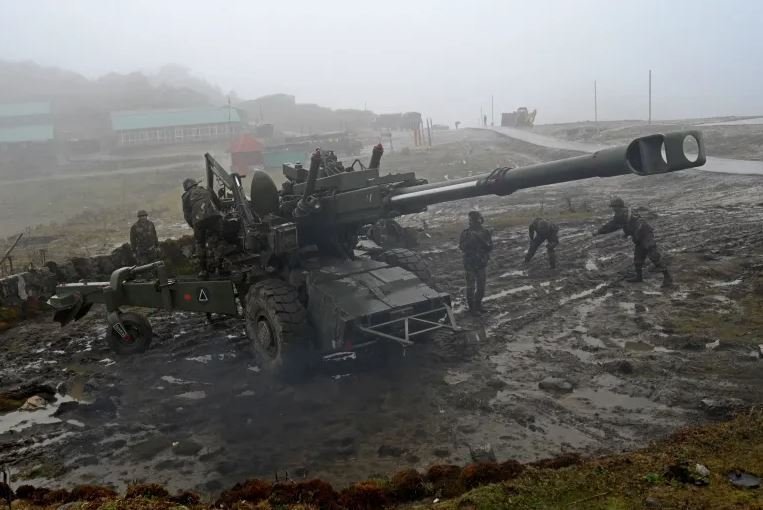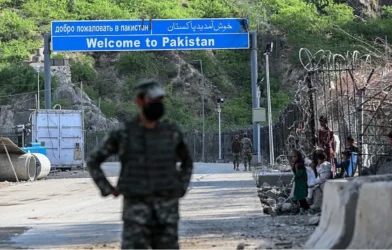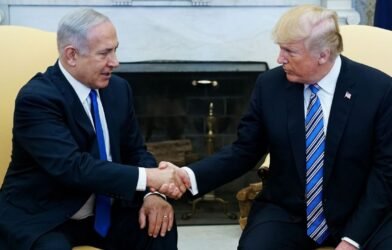Subtotal $0.00

Border disputes between China andIndia One of Asia's hottest geopolitical issues, despite ongoing attempts at settlement, armed confrontations and conflicting political interests continue to complicate a final solution.
The 3,500-kilometer common border is a source of constant tension between the two sides, dating back to the 19th century, when the British Empire drew the border of "British India" with China through Line of Control "It was named after British diplomat Henry McMahon, who oversaw its demarcation during the 1914 Shimla Conference between the British Empire, which then ruled India, andTibet which was autonomous, but was part of China.
China's central government, which was then under the Qing dynasty, was absent from the signing of the agreement, and later objected to it, considering the line a colonial legacy that does not legally bind it, and refused to recognize it, while India believes that this line represents its internationally recognized legal border.
With India's independence in 1947 and the establishment of the People's Republic of China in 1949, tensions began to escalate, and Beijing reiterated its rejection of the McMahon Line, while India insisted that the borders it inherited from British colonialism were its legitimate borders and were not negotiable, as stated by India's first prime minister Jawaharlal Nehru.
Areas with unquenchable flames
The border dispute over Kashmir The region is the most important part of this protracted conflict, as it is the link between India's enemies China andPakistanwhich is the epicenter of the "pincer strategy" that the two allies are using to limit India's regional role.
The disputed area of Kashmir between India and China called Aksai Chin was historically insignificant due to its high altitude of 5,000 meters, making it cold and uninhabited.
Despite attempts to demarcate the border between the two countries, this particular area remained outside the attention of both sides until the 1950s, when China built a road connecting the area to China's Xinjiang region, which was one of the triggers of the 1962 war between the two sides.
The region has witnessed several limited confrontations between the two sides, in which sticks and stones were used, the most recent of which was in 2020 in the "Galwan River" valley adjacent to Aksai Chin, battles that left 20 dead among Indian forces and at least 4 dead among Chinese forces, which brought the tension back to the forefront, followed by a major military buildup along the dividing line between the two countries.
Arunachal Pradesh and the eastern Himalayan region are the most prominent areas of dispute in the McMahon Line, with mountain peaks, rugged terrain, and diverse communities with different cultures and languages complicating the border dispute.
India considers Arunachal Pradesh, on which the northeastern border lies, an essential part of its sovereign territory and a strategic natural barrier to any Chinese advance towards northeastern India, while China claims it as part of southern Tibet and calls it "Tsai Nan", characterized by its strategic location and diverse cultures, which further complicates the dispute.

Endless tensions and escalations
The border dispute has witnessed repeated military escalations, most notably the outbreak of the 1962 war, which marked a turning point in relations between the two countries and served as a catalyst for hostility between them, and the war turned the border dispute into a permanent geostrategic military rivalry, and prompted India to consider China a serious security threat.
Although the war, which began with a massive and rapid Chinese offensive in Aksai Chin and Arunachal Pradesh and ended with the capture of Aksai Chin, did not end with a political agreement, it led to ongoing tensions and prompted India to strengthen its military capabilities, especially in the border areas.
India has developed military capabilities designed exclusively to counter China, including aircraft carriers, ballistic missiles and nuclear weapons, and in 1998 Indian Prime Minister Atal Bihari Vajpayee explained in a confidential letter to US President Bill Clinton that India's nuclear weapons were acquired, in part, to counter "a state that committed armed aggression against India in 1962."
Clashes in the Galwan River Valley adjacent to Aksai Chin in 2020 brought tensions back to the forefront, followed by a major military buildup along the dividing line between the two countries.
China's publication in 2023 of a map that included disputed areas drew Indian criticism. "We have today conveyed to the Chinese side through diplomatic channels our strong protest against the so-called China Standard Map of 2023, which claims sovereignty over territory belonging to India," an Indian External Affairs Ministry spokesperson said.
"Two areas in the map published by the Chinese state-owned Global Times belong to India," New Delhi said.
The grim specter of military confrontation
India, in 2023, warned of what it called a "fragile and dangerous" situation between it and China in the Ladakh region of the Himalayan region of Kashmir, where armed forces from both sides are deployed in close proximity at a number of points.
"The situation in my opinion is still very fragile, because there are places where the forces of both sides are deployed very close to each other, so in terms of military assessment the situation is very dangerous," Indian Foreign Minister Subramaniam Jaishankar said in a forum for India Today magazine.
India-China relations "cannot be normalized until the border dispute is resolved in line with the September 2020 preliminary agreement he reached with his Chinese counterpart," he said.
Disagreement does not ruin business
Although several agreements have been signed since the 1990s, such as the 1993 Peace and Armistice Agreement, they failed to prevent border incidents. The two sides also conducted multiple rounds of negotiations at the political and military levels, but they often led to temporary lulls without achieving permanent solutions or a final settlement to the conflict between the two countries, and the disengagement remained partial, with more troops from both sides being sent to the border.
"We are committed to resolving disputes through dialogue, but our sovereignty is not negotiable," said Chinese President Xi Jinping. This firm stance was reflected in the dialogue meeting between Chinese Defense Minister Li Shangfu and Indian Defense Minister Rajnath Singh in New Delhi on the eve of the 2023 Shanghai Cooperation Organization (SCO) meeting, which was tense as both sides avoided shaking hands.
The Indian minister said that "the violation of existing agreements between the two countries has completely eroded the foundation of bilateral relations," the French newspaper Le Monde reported, adding that he "categorically stated that the development of Indo-Chinese relations depends on peace and tranquility on the border" between the two countries, according to a report by its New Delhi correspondent Sophie Landrin.
Chinese Defense Minister Li Shangfu made it clear that China does not have the same reading of trade and conflict, responding that the situation on the border seemed "generally stable" to him, and that bilateral relations should be separated from the border conflict. "The two sides should adopt a long-term view and put the border issue in its proper place in bilateral relations," the Chinese delegation said in a statement, adding that "the two sides should adopt a long-term view and put the border issue in its proper place in bilateral relations between the two countries.
Geopolitical dimensions
The border dispute between China and India is not just a geographical dispute, but represents a larger struggle for regional influence between two rising powers in Asia, a conflict in which national interests and geopolitical rivalry are intertwined, and each country seeks to strengthen its political, economic and military position.
The border dispute between the two countries is part of a larger struggle for leadership in Asia. Border tensions may lead to changes in regional and global alliances, and the interest of major powers in this dispute reflects its importance in determining the future of the global order.
China seeks to promote theBelt and Road"While India is moving in a different direction by trying to expand its influence in the Indian Ocean through alliances with Western countries, it is moving in a different direction by trying to expand its influence in the Indian Ocean through alliances with Western countries.
The dispute threatens bilateral trade between India and China, worth hundreds of billions of dollars, and hinders their cooperation in technology and energy, while governments in both countries seek to use the dispute to boost their domestic popularity, exacerbating tensions that show no end in sight.
Heavy International Shadow
International powers, such as the United States, play a role in supporting India as part of its strategy to contain China's influence, further complicating this dangerous issue. This support has manifested itself through military agreements to share geographic and intelligence information, and has strengthened the Quad with Japan, Australia, and India to face Chinese challenges.
The US Senate also adopted a resolution declaring that the McMahon line drawn by the British colonialist in 1914, which Beijing considers illegal, is the international border between China and India, and that the state of Arunachal Pradesh is an integral part of India.
Russia, a traditional ally of India since the Soviet era and at the same time a strategic partner of China, is trying to maintain the balance between the two sides by playing a mediating role, but is more focused on its partnership with China to counter Western pressure, while Pakistan supports China heavily, especially in projects such as the China-Pakistan Economic Corridor, and Pakistan sees the dispute as an opportunity to weaken India.
Despite calls for dialogue between China and India to find a lasting solution to their border disputes, mutual mistrust, the struggle for influence and leadership in Asia, and attempts by major powers to exploit the dispute complicate the chances of reaching a final settlement.
Despite the huge shared economic interests, this dispute will remain a constant source of tension in the region, and each side will seek to strengthen its military infrastructure in the disputed areas, increasing the potential for escalation.
However, the thought of the economic and political losses of a potential all-out war pushes both sides to seek diplomatic solutions or avoid a major military confrontation.









